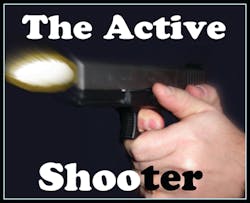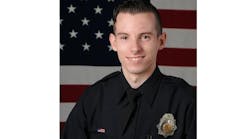The incidents du jour, as dictated by the media, have become what’s referred to as active shooters. Although this genre of crime has been around for decades, it seems the reportage would have us believe the number of incidents have grown exponentially. And while individuals have for years been engaged in killing more than one person in these types of situations, we formerly referred to them as mass murderers and/or serial killers. The lexicon now labels them all as active shooters. Sadly, it also seems that in the last ten years the media has been transfixed on this particular type of tragedy, and through their fixation on the perpetrators, they’ve turned these warped individuals into instant celebrities. Thus each shooter tries to “best” the last incident.
That said, the fact is these multiple shootings are not growing in frequency. That contrary bit of information comes from criminologist, James Allen Fox, who began studying the subject back in the 1980s when multiple killings in post offices first began to occur. (Remember the term, “going postal?”) Moreover, as many cops will tell you, in the majority of murders the shooter and the victim generally know each other. Strangers killing strangers is an anomaly.
Another criminologist engaged in the same field of study, Grant Duwe, similarly advises that mass killings are not becoming more frequent. In fact, they actually dropped in the 2000s. Duwe’s data indicates that mass killings claimed 32 lives in the 1980s, 42 lives in the 1990s and 26 in the first 10 years of 2000. To put these numbers in perspective, according to Duwe, the chances of dying in a mass shooting are no greater than being struck by lightning. Comforting, I guess, although I’ll take a pass on both.
Nevertheless, technology has enabled vivid coverage of every incident, ad nauseam, making each event even more horrendous than its predecessor. So let’s understand what exactly it is that we are referring to—what is a mass shooting or active shooter incident? What qualifies an incident to be labeled as such? Is it the number of victims?
According to Homeland Security: an active shooter is as an individual actively engaged in killing or attempting to kill people in a confined and populated area; in most cases, active shooters use a firearm(s) and there is no pattern or method to their selection of victims. Okay, I guess that’s generic enough, but I’d also add that the venues selected by the bad guys are often “soft targets . . . gun-free zones,” where it’s likely the shooter will encounter minimal or no resistance.
Who is most likely to become an active shooter? According to the FBI, the profile looks like this:
- A young white male who feels entitled and has been bullied
- Who has access to guns in the home
- Is an honor roll student from a good community
- Has intolerant attitudes toward racial or religious minorities
- Possesses a superiority attitude
- Has poor coping skills
- Exhibits distorted thinking relative to the negativity he perceives from others
Law enforcement has done a remarkable job in addressing this hard to prevent crime. Active shooter response training is a part of every department and agency curriculum. But as much as we would like to confront the active shooter with multiple officers, the reality is that we are almost always in a reactive posture, and time is working in favor of the shooter. More often than not, we must wait for the incident to unfold before we are able to interject ourselves into the fray. Depending on the venue, whether it occurs in a big city or an isolated rural community, that response with well-trained responders may be a while in arriving.
Therefore, the individual officer becomes our best asset. Ideally, we’d like to have a response in which we send in several similarly trained officers, but that may not always be possible. Thus, the responsibility rests with the first car on the scene, and in these types of incidents it’s important to get inside and act quickly. By doing this, we interrupt the killer’s plan and his activity. This rapid interdiction is critical to saving lives.
However, quickly inserting oneself into the active shooter situation does not mean running blindly into a gun battle. Rather, it simply means stopping the shooter as fast as possible, either by lethal means or by the mere fact that he knows law enforcement is present. That knowledge alone, that cops are on scene, has ended the carnage in many instances and caused the gunman to commit suicide.
Therefore, the key to reacting to an active shooter situation is rapid response - get on scene and inside as quickly as possible. In all ways, be tactically sound, just as you would in any shooting situation, using proper entry and clearing techniques. Communicate. Be ready as soon as you get out of your vehicle, no time to gear up. You should have already had whatever you need within reach: rifle, lights, ammo. Time is of the essence. Any delay may cost lives. The old practice of waiting for SWAT or assist units is not an option.
What works in most of these incidents is something that’s been practiced by SWAT units since day one: Speed-Surprise-Violence of Action. If you have the luxury of a partner or response team, you’re way ahead of the game. If not, remember that the wolf is already inside the pasture. Your job as the sheepdog is to kill the wolf before he kills the sheep. You took an oath to do just that. Anything less is unacceptable.
One last point - if you’re off-duty and witness one of these events as it unfolds, it is imperative that you take action. Remember, most incidents end when a cop (on or off-duty) or a civilian with a CCW permit confronts the shooter. However, it’s important that you continue to ID yourself even before the uniforms arrive, as there may be other off-duty cops or permit holders in the near vicinity. Once the cavalry is in control, your job is finished. Prepare for the interview.
Stay Safe, Brothers and Sisters!
Links:

John Wills
John M. Wills is a former Chicago police officer and retired FBI agent. He is a freelance writer and award-winning author in a variety of genres, including novels, short stories and poetry. John also writes book reviews for the New York Journal of Books, and is a member of the National Book Critics Circle. His new book, The Year Without Christmas, is available now. Visit John at: www.johnmwills.com.



